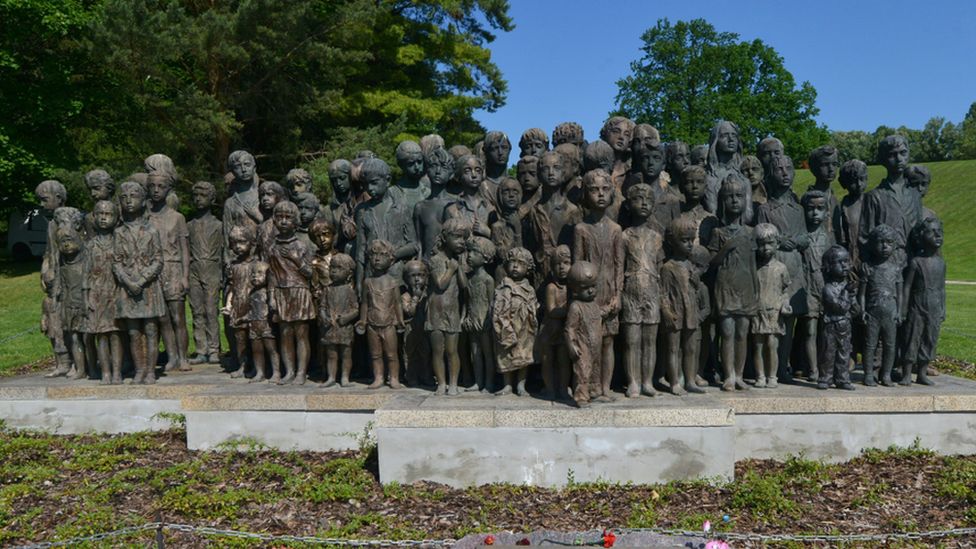Lidice
Coventry, was officially twinned with Lidice in 1947. How did this come about?
On 27 May 1942, members of the Czechoslovak resistance wounded Reinhard Heydrich, a top Nazi official in an ambush. Heydrich died a few days later. Hitler was incandescent and ordered the destruction of Lidice in revenge. There was no particular reason as far as anyone knows to pick on Lidice though the Germans claimed that two families from the town of Lidice were in some way connected to the Czech resistance.
Over two days, June 9–10, German police and SS officials destroyed the town. The Germans shot 173 men (this included boys over fifteen) as well as seven of the women. The rest of the women, including girls 16 and older, were sent to Ravensbrück concentration camp where many of them died. Lidice was burned to the ground and a further 20 townspeople were executed. Lidice was to be erased from the map of Europe.
Most of Lidice’s children were sent to Lodz, a city in German-occupied Poland. There, nine of the children were judged as sufficiently Germanic to be given new German names and taught to speak German. There were then placed with adoptive German parents. Many of the other children were sent to camps or killed outright.

A memorial to the children killed by SS
The massacres at Lidice became well-known around the world. There were atrocities on a larger scale throughout the second world war but Lidice really caught the imagination of ordinary public as well as world leaders. Solidarity events were held and ‘Lidice Shall Live’ campaigns were set up. In Britain there was a particularly strong response in the city of Stoke through the efforts of Barnett Stross, a doctor, local councillor and labour activist. There was also a very evocative film produced by the wartime Crown Film Unit entitled ‘The village that died’. This was a reimagining of the events as though taking place in a village in Wales. For many the film captured what was at stake in fighting the war.
Lidice was rebuilt after the war and a museum and memorial site were agreed. Many of the Lidice survivors worked at the memorial and so kept the story alive in Czechoslavakia (as was) and throughout the world. Coventry donated the first 1,000 roses for the memorial garden in Lidice and peace committees from other countries donated thousands more. (The rose grower and media personality Harry Wheatcroft was called in to design the rose garden and he produced a new variety: the Lidice Rose.)
Notes
The story of the massacre told in many places including a particularly accessible account at the encyclopaedia produced by the United States Holocaust Museum [online]
https://encyclopedia.ushmm.org/content/en/article/lidiceLink opens in a new window
Within the same site there is also a clip from the testimony of Maria Doležalová speaking at the war crimes trial
https://collections.ushmm.org/search/catalog/irn1000383
Maria Doležalová (her later married name was Marie Šupíková) recently died – see Radio Prague International for a pen portrait.
There are various blogs which recall the Lidice massacre including:
‘Lidice lives’ a blog by an academic by Elizabeth Černota Clark, at Texas State University School.
https://lidicelives.wp.txstate.edu
'Cultural value' blog site produced by academic colleagues at Staffordshire University, in Stoke.
https://blogs.staffs.ac.uk/culturalvalue/
There are photos of the village before and after the razing of the village on a web site produced by ‘Dobromysl’ (sorry I cannot provide more details of the site owners).
http://www.indiannet.eu/galerie-exhib09.html
You can view the film ‘The village that died’ for free at the British Film Institute web site:
https://player.bfi.org.uk/free/film/watch-the-silent-village-1943-onlineLink opens in a new window
For more on Barnett Stross, who comes over as a remarkable man, go to a local history of Stoke web site (be sure to scroll down the page to see relevant pictures)
